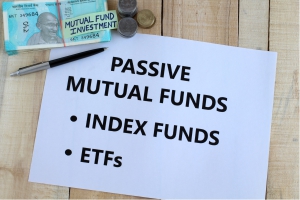We are living in interesting times from the perspective of financial investments. It does not matter whether you are an old investor or a new investor – the fact of the matter is that it has never been easier to build a well-diversified portfolio which generates efficient risk-adjusted returns. Given the plethora of investment opportunities and avenues, there are multiple investment products with varying degrees of complexity and innovation, which suit varying risk profiles. Among these investment mediums, passive investment opportunities have been on the rise.
What are Passive Funds?
Passive funds are the funds which follow a “passive investment strategy”, which minimises the buying and selling of securities (also known as portfolio churn) and follows a long-term investment outlook of buy-and-hold. Passive funds believe in gradual wealth-creation and aim to avoid constant trading in the market. Passive funds also believe that it is quite expensive and difficult to out-perform the market, and hence, replicate sectors / indices / well-diversified portfolios.
Advantage of Passive Funds
In order to understand whether the passive investment approach is for you, it is important to know the advantages and benefits of investing in passive funds. The advantages of passive funds are:
- Lower Costs - As passive funds undertake lower churn and require lower monitoring, they have lower expense ratios
- Lesser Bias - Passive funds aim to replicate an index / sector in the exact proportions; thereby eliminating any human bias towards a particular stock / sector
- Better Transparency - Funds replicating any index / sector provide a greater transparency to the investor as their holdings represent the benchmark in the exact proportions
- Simplicity of Investment - Passive funds are simpler forms of investment and are much easier to understand than any of the active funds. Hence, they are great instruments for novice investors to generate risk-adjusted returns
The major disadvantage of passive funds is that they have no potential to out-perform the market as they are tracking the benchmark itself.
Types of Passive Funds
There are different types of passive funds which you can consider while creating a well-diversified investment portfolio.
- Index Funds - Index Funds are mutual funds which replicate a particular index or a sector, in the respective proportions. The fund manager of the index fund aims to generate returns that are in line with the underlying index.
- Exchange Traded Funds (ETFs) - ETFs are pooled investments which are created to track the benchmark index or sector. ETFs share features of both mutual funds and stocks, in that, they are pooled investments which are traded on the stock exchange. The value of the ETFs changes in real-time and can be purchased by anyone possessing a demat account. ETFs can be created across stocks, bonds, commodities and currencies.
- Fund of Funds (FoF) - FoF are mutual funds which invest in the units of other mutual funds, rather than buying securities (stocks / bonds / commodities / currencies) themselves. While FoFs may have slightly higher expense ratios as compared to index funds, they do provide the investor with a well-diversified portfolio.
- Smart Beta Funds / ETFs - These are an extension of ETFs, which do not aim to just replicate an index but also select the individual securities based on various parameters such as volatility, value, growth and momentum. Smart Beta ETFs mix passive investing approaches with some elements of active selection.
The glamour of active investment has been under question for quite a while now. Globally, passive investment funds have been picking up steam as most of the active funds have failed to match / outperform their benchmarks. Passive investing in India has begun picking the pace as well, with different types of passive investment funds being available in the market. By virtue of being low-cost, simple investment vehicles, these passive investment funds have brought down the entry barriers to investing and are a source of stable risk-adjusted returns. With the various types of passive investment funds to suit various investor-needs, passive investing has become a viable source of wealth generation across the board.
An investor education initiative by Edelweiss Mutual Fund
All Mutual Fund Investors have to go through a onetime KYC process. Investor should deal only with Registered Mutual Fund (RMF). For more info on KYC, RMF and procedure to lodge/redress any complaints, visit - https://www.edelweissmf.com/kyc-norms
MUTUAL FUND INVESTMENTS ARE SUBJECT TO MARKET RISKS, READ ALL SCHEME RELATED DOCUMENTS CAREFULLY
Trending Articles
MUTUAL FUND INVESTMENTS ARE SUBJECT TO MARKET RISKS, READ ALL SCHEME RELATED DOCUMENTS CAREFULLY.




















